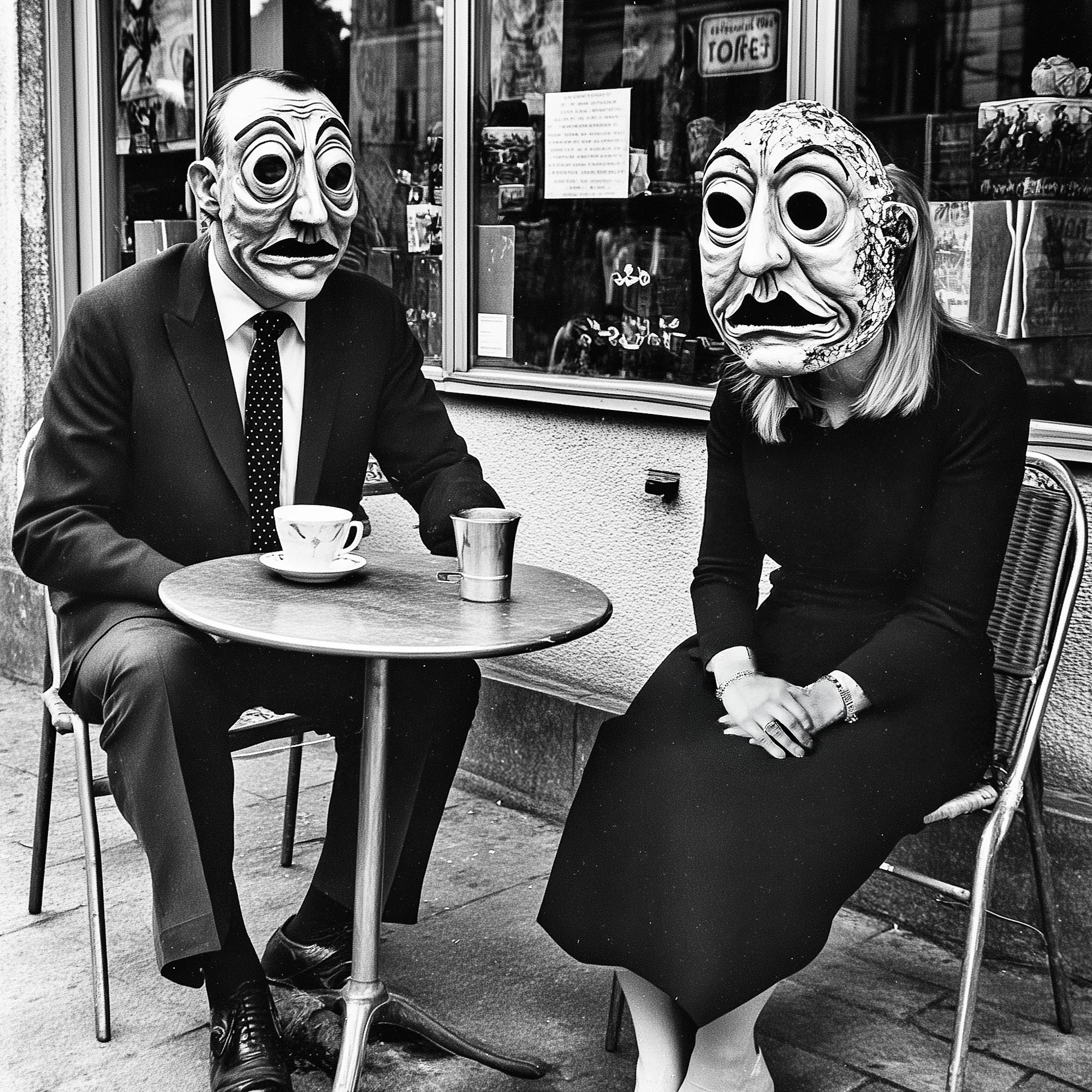Tucked into the folds of France’s forgotten woodlands, where the mists settle low and the ravens speak more than the people, lies the village of Saint-Mystère. A place without voices. A place of masks.
No signs welcome you. The roads grow narrow as you approach, as if nature itself conspires to keep you out. But if you persist — if the wind does not turn you around — you’ll find the villagers there. Always masked. Always silent. Not out of rudeness.
Out of fear.
The Night the Silence Began
The year was 1079. Winter came early that year. A hooded stranger arrived just after sunset, barefoot, his cloak stiff with road dust and blood. He said nothing, but made the sign of the cross with trembling fingers. The villagers, wary yet devout, led him to the abbey.
That night, the monks heard murmurs rising from the abbot’s chambers — not in prayer, but in some twisting language that scraped the ear like broken glass. Then came silence. A heavy, unnatural silence.
By dawn, the abbot was dead.
His body lay curled before the altar. His eyes bulged in terror. His tongue, neatly severed, was never found. And the stranger? Gone. As if the earth had swallowed him whole.
The Village That Chose Silence
Soon, the village changed.
First, it was whispers in the forest — disembodied and cold. Then the dreams: entire households waking at once, screaming into the dark. One child drew pictures of masked figures dancing in fire. Another carved symbols into her door, symbols no one recognized but everyone feared.
And then Ysabeau.
She was the first to challenge it. She spoke aloud, calling for reason, for light. Her voice rang out like a bell in the fog.
By morning, her house was empty. No signs of struggle. Just a mask on the doorstep, wet with dew and... something else.
The people took it as a sign.
They crafted their own masks — wood, leather, cloth — and covered their faces. They locked their words behind their teeth. Silence fell like snowfall, soft and total. And in its stillness, the village... survived.
The Covenant
A statement was left on the altar weeks later — not written, but etched into the stone with a knife:
“What was spoken cannot be unsaid. What was revealed cannot be unrevealed. Let the mask protect. Let silence preserve.”
For centuries they built no more churches. They took no more names. From then on, every child was raised in the discipline of silence — not as a superstition, but as law. And the forest grew thick around the town, a living wall of thorns and bark and watchful eyes.
All Hallows
Each year, on the eve of November, masked figures gather at the ancient square beneath the twisted ash tree. They do not chant. They do not light candles. They stand. Still. Waiting.
Some say they await the return of the stranger. Others claim they are trying to keep him from rising again. And some whisper — in towns far away, behind thick tavern walls — that Saint-Mystère keeps a secret so terrible, the silence is the only thing holding the world together.
Today
Saint-Mystère still exists, if you know where to look. GPS won’t find it. Maps don’t mark it. But sometimes, hikers stumble across a clearing of strange, quiet houses. They report masked faces watching from windows. No words. No footsteps.
Just a wind that seems to say:
"Speak, and you will be heard."
But no one dares reply.
Because everyone knows — even now —
In Saint-Mystère, the price of speech is your soul.










